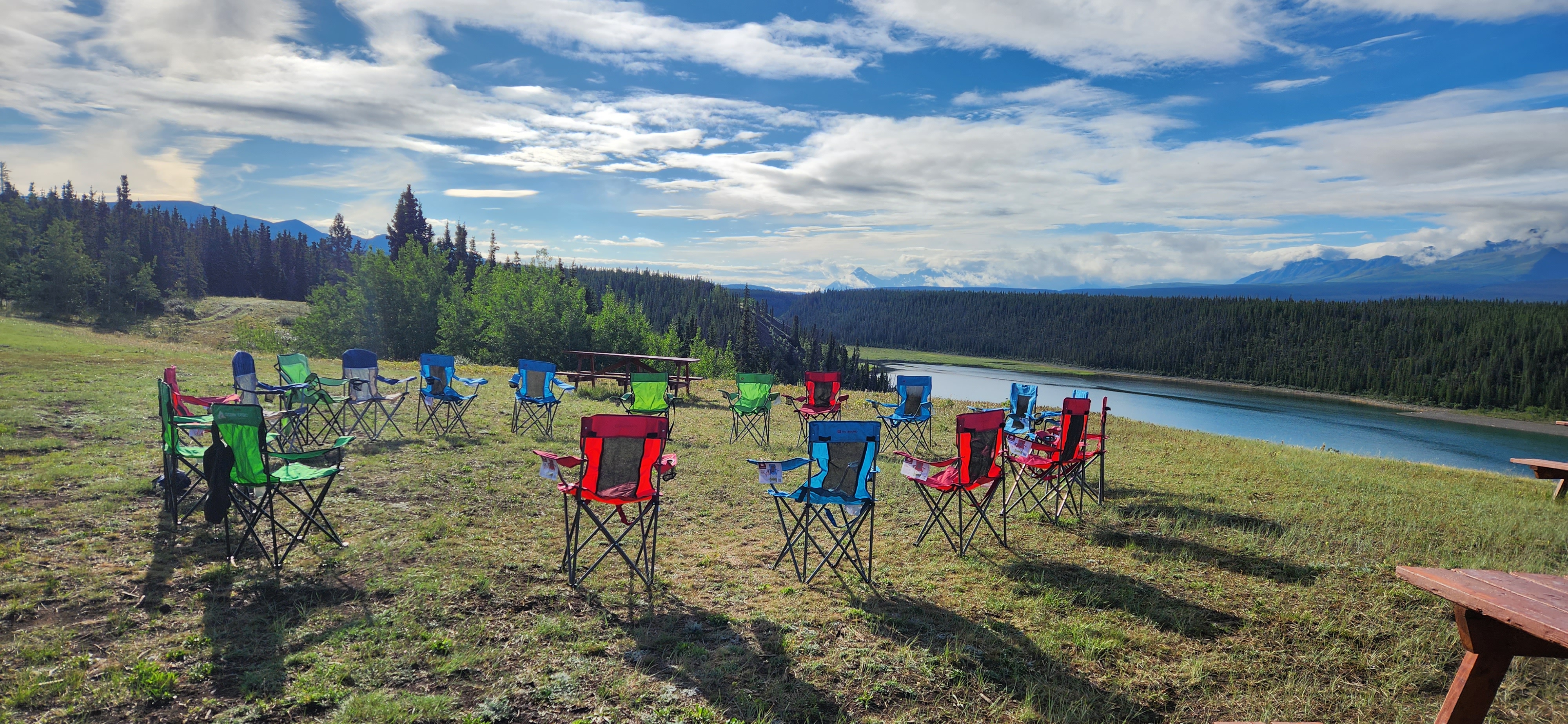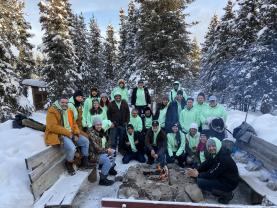
Pathways: Bringing land-based healing to the forefront
Yvonne Jack (Xhastin), is a healer.
She felt the calling early on, but the work comes with a weight and she knew the timing had to be right.
Seven years ago, as the Truth and Reconciliation Commission (TRC) prepared to release its final report, Yvonne created Xhastin's Healing Journey, the Yukon’s first land-based healing business.
“I was hopeful there would be some actions supporting land-based healing,” says Yvonne. “I knew it would be in there – it had to be.”
Since then, Yvonne has worked as a contractor and service delivery partner for the Mental Wellness and Substance Use branch (MWSU) of the Yukon government.
Around the same time, Jayla Rousseau-Thomas began working as a Cultural Wellness Consultant with MWSU. She was also hopeful that the Calls to Action would support a shift in counselling services.
As an Indigenous woman, it stood out to her that the programming offered at the time did not reflect the high number of Indigenous clients.
“Using the TRC’s Calls to Action as a guide, I started to bring more cultural programming into a system that was built on Western ways of knowing,” says Jayla. “We created a visiting Elder program and cultural knowledge workshops, and we scheduled regular outings to other healing or cultural programs.”

Land-based healing
The Yukon government has been investing in and collaborating on land-based healing programs for over a decade. Successful programs include Jackson Lake Healing Camp, week-long family camps and youth-led wellness camps.
The director of MWSU, Cameron Grandy, says the government is planning to increase its investment in land-based healing.
“Since the declaration of the Substance Use Health Emergency, our minister has said land-based healing will be prioritized,” says Cameron.
Yvonne says land-based healing is about meeting people where they’re at, it’s not about fixing them.
“We are here as helpers to guide," she says. “I always let people know that when they first come in here, there are no expectations. We meet you where you're at.”
Strengthening partnerships
Yvonne says other government departments and organizations can learn a lot from her positive partnership with MWSU.
“They’ll call me up and say, ‘we’re thinking about this idea, but what’s the First Nations lens on it? How can we improve our services’?” says Yvonne.
Jayla says the Yukon government has made important progress, but more can be done.
“When we are working in the helping field - especially dealing with mental wellness and substance use issues - we need to recognize the hurt and harms people are carrying with them,” she says. “The trauma inflicted upon Yukon First Nations is both pervasive and persistent.”
Yvonne says her partnership with MWSU embodies the true spirit of the TRC Calls to Action.
“In the recommendations, the TRC says if there is a First Nations person who can do the work, they should be in the lead,” she says.
Yvonne says she’s not interested in participating in a model that's been failing First Nation people for the last hundred years.
“We know how to heal as a people,” she says. “Everybody has healers in their community – that’s why we’re still on the map.”
Cameron says the government works directly with First Nations health departments to design and fund land-based projects.
Earlier this year, they partnered with Tr'ondëk Hwëch'in First Nation on a youth camp and Champagne and Aishihik First Nations on a family camp. They are currently working with First Nations to better understand what land-based healing means to each nation and how the government can support more initiatives.

Cameron GrandyWe want to invest more in land-based healing as part of the fabric of our services.
Growing together
Yvonne is hopeful for the future. When she was young, she watched her mother work as a healer. Now, she’s teaching her youngest daughter, April, the family trade. She feels a strong responsibility to continue the work of those who came before her.
“Our ancestors have worked too hard to get us this far,” she says. “We need to band together to heal and make sure our history isn’t swept under the carpet.”
Jayla says sometimes her work feels like a drop in the bucket, but it all adds up.
“It’s a trickle into the greater stream of supporting both Indigenous and non-Indigenous clients seeking support for their physical, mental, emotional and spiritual health.”
In August, the government released its Substance Use Health Emergency Strategy with 43 recommended actions and funding to implement 14 of them immediately.
One of the funded actions is more support for Yukon First Nations to develop and implement land-based mental health and substance use treatment options.
The Yukon government says the strategy is a roadmap to promote the health and wellbeing of Yukoners, but acknowledges that collaboration is needed from all partners to succeed.
“Collaboration is essential, as is a tailored approach that understands each community’s unique needs, desires and cultural contexts,” says Minister of Health and Social Services Tracy-Anne McPhee.
